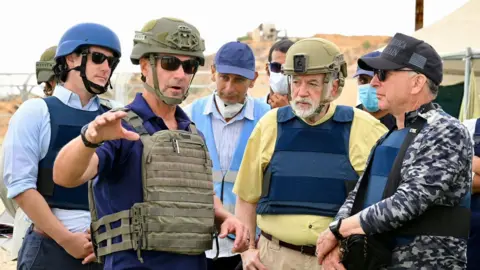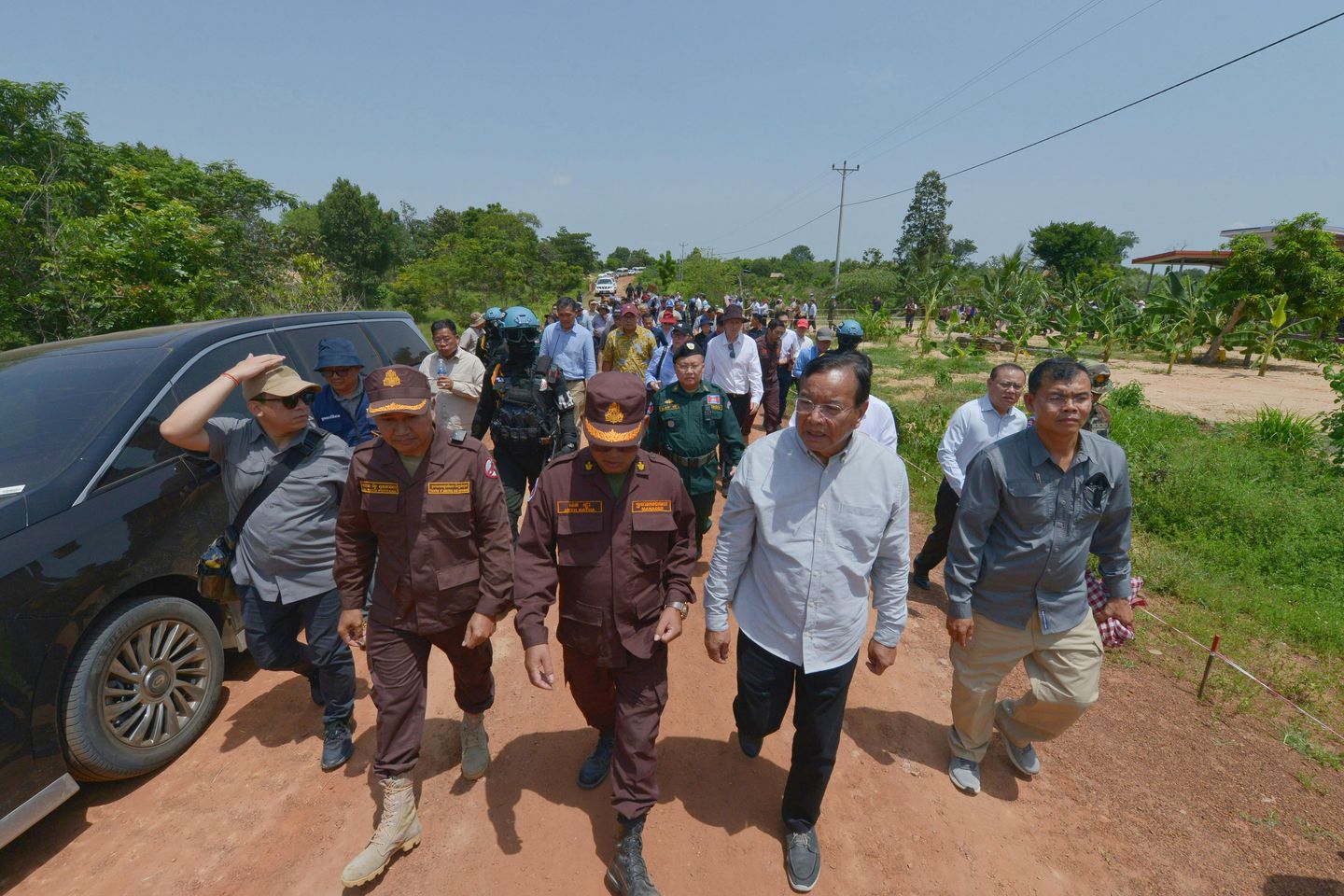 US government
US governmentUS President Donald Trump’s Middle East envoy Steve Witkoff has for the first time visited a controversial Israel- and US-backed aid distribution site in Gaza.
Witkoff said the purpose of the trip to a Gaza Humanitarian Foundation (GHF) site was to give Trump “a clear understanding of the humanitarian situation and help craft a plan to deliver food and medical aid to the people of Gaza”.
The visit follows near daily reports of deadly shootings at GHF points, with the UN reporting at least 859 Palestinians killed in the vicinity of the sites – a figure the GHF rejects.
Israel says its troops have only fired warning shots and that they do not intentionally shoot civilians.
The BBC understands Witkoff visited one of the GHF sites near Rafah in southern Gaza on Friday.
He was accompanied by US ambassador to Israel Mike Huckabee and the Israel Defense Forces (IDF).
Posting on X afterwards, alongside pictures of their visit, Witkoff said: “Today, we spent over five hours inside Gaza – level setting the facts on the ground, assessing conditions, and meeting with @GHFUpdates and other agencies.”
Huckabee said they had received “briefings from the IDF and spoke to folks on the ground”.
He claimed GHF sites were delivering “more than one million meals a day”, calling it an “incredible feat”.
The GHF said it had delivered 1.3m meals across three distribution sites on Thursday. It has not yet released figures for Friday. The UN says the number of meals provided by the GHF falls far short of overall nutritional requirements.
International journalists, including the BBC, are blocked by Israel from entering Gaza independently, making it difficult to verify claims.
Some Gazans who spoke to the BBC denounced Witkoff’s visit as a “media stunt”.
Louay Mahmoud, who lives in Gaza, said: “Steve Witkoff won’t see the hunger, only the narrative Israel wants him to see.
“This visit is a hollow media stunt, not a humanitarian mission. He comes with no solutions, only talking points designed to polish the image of an administration complicit in our suffering.”
Amer Khayrat, a father of two who lives in Gaza City, said: “What Gaza needs isn’t another envoy with a press team. We need the siege lifted, the bombing stopped, and the blind American support for this war brought to an end.”

A retired US special forces officer who worked at GHF centres told the BBC last week he witnessed IDF troops and US contractors shooting at crowds of Palestinians near sites he worked at.
Lt Col Anthony Aguilar, a special forces veteran of the US Army’s Green Berets, said he had never witnessed such a level of “brutality and use of indiscriminate and unnecessary force against a civilian population, an unarmed, starving population” in his entire career.
The GHF has called Aguilar’s allegations “categorically false”, describing him as a “disgruntled former contractor who was terminated for misconduct”, which he denies.
On Friday campaign group Human Right Watch (HRW) accused Israeli forces and US-backed contractors of establishing “a flawed, militarised aid distribution system that has turned aid distribution into regular bloodbaths”.
HRW called for Israeli authorities “to immediately stop using lethal force as crowd control against Palestinian civilians” and called for the US and Israel to suspend the operation.
GHF aid sites replaced the UN distribution mechanism in May, sparking international outrage. Israel accused Hamas of looting UN aid, a charge Hamas denies.
There are four GHF sites, which are located inside Israeli military zones and are operated by US private security contractors.
Eyewitnesses and medics have on several occasions described Israeli forces opening fire on crowds near the aid points.
In addition, UN agencies have warned man-made, mass starvation is taking place in the territory.
The UN’s human rights office (OCHR) said on Thursday that at least 1,373 Palestinians had been killed while trying to get food aid in Gaza. Of those, 859 have been killed near GHF sites, it said.
The OCHR said most were killed by the Israeli military, and while they were aware of other armed groups in the same area, it added that they “do not have information indicating their involvement in these killings”.
The office said it had “no information that these Palestinians were directly participating in hostilities or posed any threat to Israeli security forces”.
Israel has accused Hamas of instigating the chaos near the aid sites. The GHF rejected the UN’s numbers when approached for comment by the BBC.
Meanwhile, at least 10 people have been killed in southern and central Gaza since dawn on Friday, according to the Hamas-run Civil Defence agency.
The figure includes eight people who were killed in two separate Israeli air strikes targeting tents sheltering displaced people – in Khan Younis in the south and Deir al-Balah in the centre of the strip, the agency said.
Two others were killed and at least 20 more injured when Israeli forces opened fire near an aid distribution point along the Morag corridor, north of Rafah, the civil defence added.
Local residents said hundreds of people had gathered to get food when the shooting began.
The BBC has approached the Israeli military for comment.
The Hamas-run health ministry said on Friday 82 people had been killed in Gaza in the past 24 hours, 52 of whom were reported to be seeking aid.
Witkoff met Israel’s Prime Minister Benjamin Netanyahu in Israel on Thursday for what were described by a US spokesperson as “productive” talks.
There were discussions of a major reformulation of the ceasefire negotiations, according to Israeli media reports, which include an “all-in deal” that would see all hostages held by Hamas released in a single exchange, alongside the full disarmament of Hamas. Previously, hostages were to be released in phases.
Hamas has said it will not return to the table until more aid is allowed into Gaza to address starvation.
The US and Israel pulled out of ceasefire talks last week, accusing Hamas of lacking coordination and not negotiating in good faith.
Hamas accused the Israeli side of intransigence over key sticking points in the negotiations.



Leave a Comment